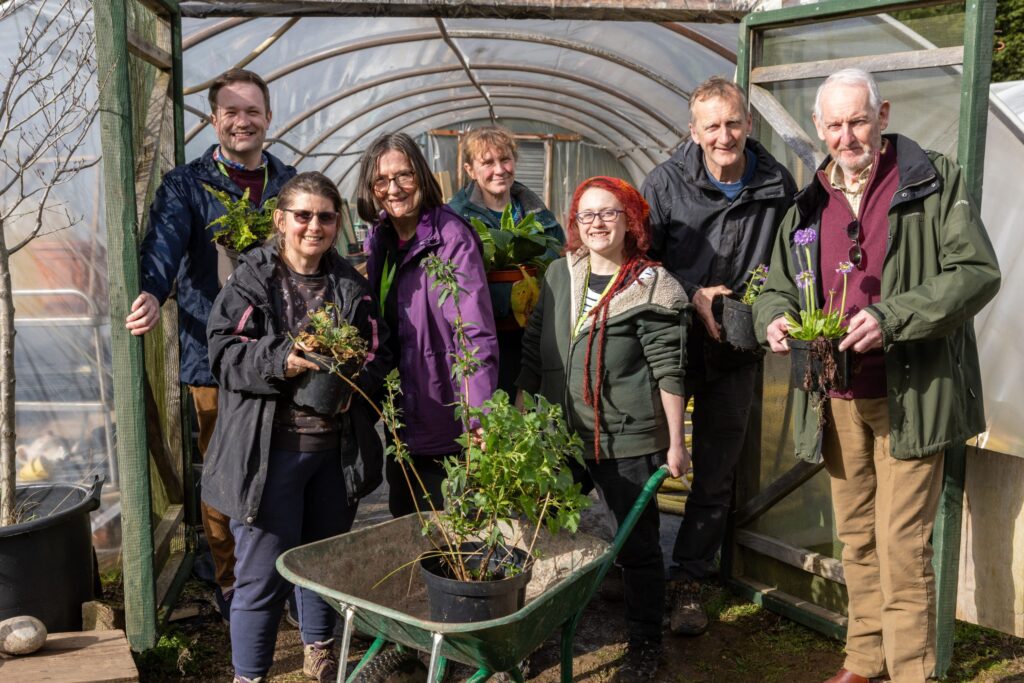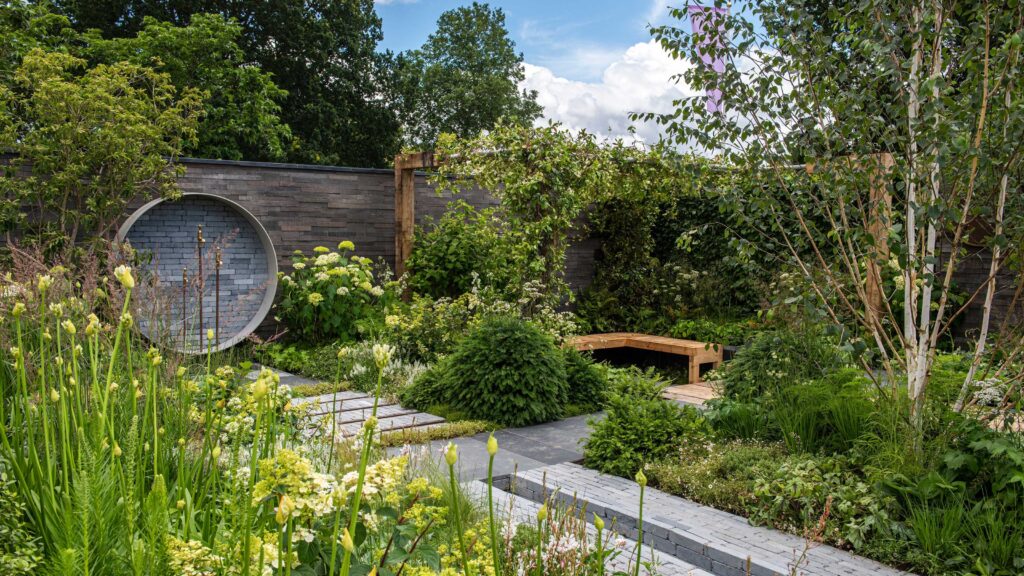The Power of a Community Garden

In an age dominated by screens and stress, community gardens are helping people reconnect—with nature, neighbors, and their food. A community garden is more than just a plot of land where vegetables grow; it’s a space that cultivates collaboration, environmental awareness, and wellness.
Whether you live in a bustling city or a quiet town, starting a community garden can transform an unused area into a thriving green hub. The best part? You don’t need to be a gardening expert to begin.
In this guide, we’ll walk you through how to start a community garden in your city, from finding the perfect spot to harvesting your first crop.
Why Start a Community Garden?
Before jumping into the steps, let’s explore why starting a community garden is worth your time and effort.
1. Promotes Sustainability
Community gardens promote sustainable living by reducing food miles, cutting packaging waste, and encouraging organic farming methods.
2. Builds Stronger Communities
They bring together people of different ages, backgrounds, and cultures. It’s an opportunity to share skills, swap recipes, and build lasting friendships.
3. Improves Food Security
With rising food prices, growing your own vegetables can help ensure fresh, affordable produce for everyone in the neighborhood.
4. Enhances Mental and Physical Health
Gardening is known to reduce stress, anxiety, and depression. It also provides light physical activity and a sense of accomplishment.
5. Beautifies Urban Spaces
Transforming vacant lots into lush gardens improves the city’s aesthetics and increases community pride.
Step 1: Form a Dedicated Gardening Team

The first step to starting a successful community garden is building a team of like-minded people.
How to Get Started:
Reach out to neighbors: Post flyers in local community centers, libraries, or parks.
Use social media: Create a local Facebook or WhatsApp group for interested residents.
Contact schools and NGOs: Many local institutions love supporting community projects.
A team of 8–15 committed members is ideal for planning, fundraising, and maintenance. Assign roles such as:
Coordinator – manages planning and meetings
Treasurer – handles funds and donations
Garden Manager – oversees planting and maintenance
Community Outreach Lead – builds partnerships and recruits volunteers
Step 2: Find the Perfect Location
Location is key. A community garden should be accessible, safe, and sunny.
What to Look For:
Sunlight: At least 6–8 hours of sunlight daily.
Water access: A nearby tap, hydrant, or rainwater harvesting setup.
Soil quality: Avoid contaminated or industrial land; conduct a soil test first.
Accessibility: Close to neighborhoods or public transport routes.
Common Garden Location Ideas:
Vacant city lots
Schoolyards or college campuses
Church or temple grounds
Rooftops or terraces
Parks with unused green space
If it’s public land, contact your city’s parks department or municipal office for permission. For private land, approach owners directly—many are happy to support community efforts.
Step 3: Plan and Design Your Garden

Once you have your space, it’s time to plan your layout. A well-organized garden ensures sustainability and ease of maintenance.
Key Layout Elements:
Individual plots – Small sections for each member or family.
Common areas – For tools, composting, and community activities.
Pathways – Use gravel or mulch for easy movement.
Watering zones – Drip irrigation or rain barrels for efficiency.
Signage and benches – Encourage education and relaxation.
You can sketch your plan on paper or use free design tools like SmartDraw or Garden Planner.
Step 4: Secure Funding and Resources
Most community gardens start with limited budgets, but creative fundraising can cover your initial costs.
Funding Options:
Member fees: Small monthly or yearly contributions.
Donations: Reach out to local businesses or hardware stores.
Grants: Look for environmental or urban farming grants from NGOs or government bodies.
Crowdfunding: Use platforms like GoFundMe or Ketto to raise money.
Essential Supplies:
Gardening tools (spades, rakes, watering cans)
Soil, compost, and seeds
Fencing and signage
Storage shed
Rainwater harvesting barrels
Pro tip: Many nurseries donate seeds or plants for community causes—just ask!
Step 5: Organize Community Rules and Management
A clear set of rules and guidelines prevents confusion and promotes harmony.
Common Garden Rules:
Each member maintains their assigned plot.
Use organic and eco-friendly methods only.
Share tools and water responsibly.
Clean up after gardening sessions.
Attend monthly meetings and workdays.
Create a Garden Agreement Form that each member signs—this helps ensure accountability and long-term commitment.
Step 6: Prepare the Land

Once your group and funding are ready, it’s time to get your hands dirty!
Steps for Land Preparation:
Clean up: Remove weeds, trash, and debris.
Soil testing: Test pH and contaminants (many agriculture offices offer free testing).
Improve soil: Add compost, organic matter, and mulch.
Create garden beds: Raised beds work best for urban areas.
Install fencing: Protect from stray animals and trespassers.
You can organize a community clean-up day to make it fun and collaborative.
Step 7: Choose the Right Plants
Choosing the right crops ensures your garden thrives through the seasons.
Ideal Crops for Beginners:
Vegetables: Tomatoes, spinach, okra, cucumbers, beans
Herbs: Basil, mint, coriander, thyme
Flowers: Marigolds, sunflowers, zinnias (great for pollinators)
Fruits: Strawberries, papaya, guava (depending on space)
Focus on local and climate-friendly plants—they require less maintenance and yield better results.
Step 8: Involve the Community
Step 8: Involve the Community
Your garden will flourish when the community feels ownership and pride.
Engagement Ideas:
Host gardening workshops or seed-swapping events.
Invite local schools for field trips.
Celebrate Earth Day or Environment Week with open garden days.
Create social media pages to share progress and attract volunteers.
A vibrant online presence (especially on Facebook, Instagram, and WhatsApp groups) helps inspire other neighborhoods to start their own gardens.
Step 9: Maintain and Grow Together
Maintenance is key for sustainability.
Weekly Tasks:
Watering and weeding
Composting organic waste
Pest control (use natural repellents like neem or garlic spray)
Harvesting and sharing produce
Rotate responsibilities so everyone contributes equally. You can also appoint seasonal coordinators for smoother operations.
Step 10: Celebrate and Expand
Celebrate milestones like your first harvest or one-year anniversary. Hosting small events fosters pride and attracts new members.
As your garden grows, consider:
Adding a composting station
Installing solar-powered lights
Building a rainwater harvesting system
Creating a seed library for future planting
Eventually, your success might inspire nearby neighborhoods to start their own gardens—turning your city greener, one plot at a time.
Common Challenges (and How to Overcome Them)
1. Lack of Volunteers
👉 Solution: Host fun events, offer small incentives, and highlight the social benefits of gardening.
2. Funding Shortage
👉 Solution: Apply for environmental grants or partner with local businesses for sponsorship.
3. Land Ownership Issues
👉 Solution: Get written permission from landowners or use temporary land-use agreements.
4. Vandalism or Theft
👉 Solution: Install fencing, lighting, and involve local residents for neighborhood watch.
5. Water Scarcity
👉 Solution: Use drip irrigation and collect rainwater for sustainable watering.
Environmental and Social Impact of Community Gardens
Community gardens are catalysts for positive urban change. Here’s how they benefit both people and the planet:
Reduce carbon footprint by promoting local food production
Improve biodiversity by providing habitats for pollinators
Reduce food waste through composting
Encourage eco-education among children and youth
Foster inclusivity by connecting people from diverse backgrounds
In cities struggling with pollution, loneliness, and lack of green space, community gardens act as oases of hope and health.
Conclusion: Grow Together, Bloom Together
Starting a community garden is one of the most fulfilling ways to make your city greener, healthier, and more connected.
By following these steps—forming a team, finding land, planning smartly, and nurturing plants—you’re not just growing food; you’re growing friendships, resilience, and sustainability.
So gather your neighbors, grab your tools, and plant the seeds of change—your community (and the planet) will thank you.
Related posts:
 Meditation Hacks for Beginners: Start Your Journey to Self-Realization Today
Meditation Hacks for Beginners: Start Your Journey to Self-Realization Today
 10 Easy Eco-Friendly Habits to Start Today
10 Easy Eco-Friendly Habits to Start Today
 Stop Worrying and Start Living: A Guide to a Stress-Free Life
Stop Worrying and Start Living: A Guide to a Stress-Free Life
 Hindu New Year 2025: Significance, History, Traditions, and Celebrations
Hindu New Year 2025: Significance, History, Traditions, and Celebrations
 India’s Initiatives Against Plastic Waste: A Road Towards a Sustainable Future
India’s Initiatives Against Plastic Waste: A Road Towards a Sustainable Future
 Unlocking the Secrets of Sleep: How Sleep Physiology Shapes Brain Function
Unlocking the Secrets of Sleep: How Sleep Physiology Shapes Brain Function
